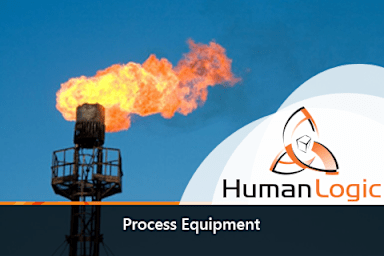
Course Overview
- Introduction to Process Equipment
- Storage Vessels – Introduction
- Storage Vessels – Types
- Storage Vessels – Safety Considerations of a Tank
- Storage Vessels – Columns and Reactors – An Overview
- Internals
- Drums
- Conveyors
- Waste Disposal System
- Heat Exchangers – An Overview
- Heat Exchangers – Troubleshooting
- Fired Equipment
- Flare Systems – An Overview
- Zero Flaring
- Flare Systems – Hazards
- Filters and Strainers
Target Audience
Oil & Gas and Manufacturing Industries
Learning Objective
- Describe the purpose of process equipment in the process industry.
- Explain the various types of process equipment.
- Explain the purpose of storage vessels.
- Recognize the safety considerations of a tank.
- Explain the purpose and different applications of vessels and towers used in the process industries.
- Explain the different constructions and the operating principles of vessels and towers used in the process industries.
- Describe Columns and Reactors; Describe the types of Reactors.
- Explain the functioning of Reactors.
- Describe the process of Continuous Catalyst Regeneration.
- Recognize different internals requirements.
- Explain the type of internals inside the column/reactor.
- Describe the types of drums.
- Explain the functioning of drums.
- Describe the conveyors used in process industries.
- Describe the waste disposal system.
- Identify different purposes and types of heat exchangers on plant and P&ID.
- Explain the function of the different types of heat exchangers.
- Describe the parameters that affect heat exchanger performance.
- Explain the troubleshooting for heat exchanger.
- Describe the various fired equipment used in petrochemical plants.
- Describe the mechanism of the fired equipment.
- State the purpose of flare systems.
- Identify the functions of components of flare system.
- List the types of flare stacks.
- Explain the flare system process.
- Explain the concept and methods of zero flaring.
- Describe the advantages of zero flaring.
- Explain the reasons for continuous purging of flare system.
- Describe hazards associated with flare systems.
- Explain the difference between operational flaring and emergency flaring.
- Recognize the importance of filters and strainers in process industry.
- Identify the different types of filters and strainers.
- List the functions of filters and strainers.
- List the reasons of underperformance of filters and strainers.
- List the hazards associated with filters and strainers.







